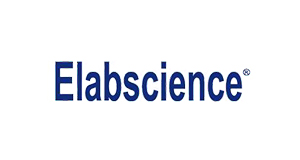Recombinant Rat CEACAM1/CD66a protein (His tag)
Recombinant Rat CEACAM1/CD66a protein (His tag)
Artikelnummer
ELSPDMR100013-20
Verpackungseinheit
20 µg
Hersteller
Elabscience Biotechnology
Verfügbarkeit:
wird geladen...
Preis wird geladen...
Abbreviation: CEACAM1;CD66a
Target Synonym: Antigen CD66;BGP 1;Biliary glycoprotein 1;CD66a;CEACAM1;meconium antigen 100;Carcinoembryonic antigen-related cell adhesion molecule 1;Biliary glycoprotein D;MHVR1;Murine hepatitis virus receptor;MHV-R;Bgp1
Target Species: Rat
Expression Host: HEK293 Cells
Fusion Tag: C-His
UNIProt ID: P16573
Background: The carcinoembryonic-antigen-related cell-adhesion molecule (CEACAM) family of proteins has been implicated in various intercellular-adhesion and intracellular-signalling-mediated effects that govern the growth and differentiation of normal and cancerous cells. CEACAM1, also known as biliary glycoprotein I (BGP I) and CD66a, is a member of the carcinoembryonic antigen (CEA) gene family which belongs to the immunoglobulin superfamily. The highly glycosylated CEACAM1 contains one N-terminal V-type Ig-like domain and three C2-type Ig-like domains within its ECD, and one ITIM motif and a calmodulin binding site in the cytoplasmic region. CEACAM1 is a surface glycoprotein expressed on various blood cells, epithelial cells, and vascular cells. It was described as an adhesion molecule mediating cell adhesion via both homophilic and heterophilic manners, and was detected on leukocytes, epithelia, and endothelia. Studies have revealed that CEACAM1 performs actions in multiple cellular processes including tissue differentiation, angiogenesis, apoptosis, metastasis, as well as the modulation of innate and adaptive immune responses.
Sequence: Gln35-Ala425
Purity: > 95 % as determined by reducing SDS-PAGE.
Formulation: Lyophilized from sterile PBS, pH 7.4.
Normally 5 % - 8 % trehalose, mannitol and 0.01% Tween80 are added as protectants before lyophilization.
Please refer to the specific buffer information in the printed manual.
Endotoxin: Please contact us for more information.
Target Synonym: Antigen CD66;BGP 1;Biliary glycoprotein 1;CD66a;CEACAM1;meconium antigen 100;Carcinoembryonic antigen-related cell adhesion molecule 1;Biliary glycoprotein D;MHVR1;Murine hepatitis virus receptor;MHV-R;Bgp1
Target Species: Rat
Expression Host: HEK293 Cells
Fusion Tag: C-His
UNIProt ID: P16573
Background: The carcinoembryonic-antigen-related cell-adhesion molecule (CEACAM) family of proteins has been implicated in various intercellular-adhesion and intracellular-signalling-mediated effects that govern the growth and differentiation of normal and cancerous cells. CEACAM1, also known as biliary glycoprotein I (BGP I) and CD66a, is a member of the carcinoembryonic antigen (CEA) gene family which belongs to the immunoglobulin superfamily. The highly glycosylated CEACAM1 contains one N-terminal V-type Ig-like domain and three C2-type Ig-like domains within its ECD, and one ITIM motif and a calmodulin binding site in the cytoplasmic region. CEACAM1 is a surface glycoprotein expressed on various blood cells, epithelial cells, and vascular cells. It was described as an adhesion molecule mediating cell adhesion via both homophilic and heterophilic manners, and was detected on leukocytes, epithelia, and endothelia. Studies have revealed that CEACAM1 performs actions in multiple cellular processes including tissue differentiation, angiogenesis, apoptosis, metastasis, as well as the modulation of innate and adaptive immune responses.
Sequence: Gln35-Ala425
Purity: > 95 % as determined by reducing SDS-PAGE.
Formulation: Lyophilized from sterile PBS, pH 7.4.
Normally 5 % - 8 % trehalose, mannitol and 0.01% Tween80 are added as protectants before lyophilization.
Please refer to the specific buffer information in the printed manual.
Endotoxin: Please contact us for more information.

 English
English










